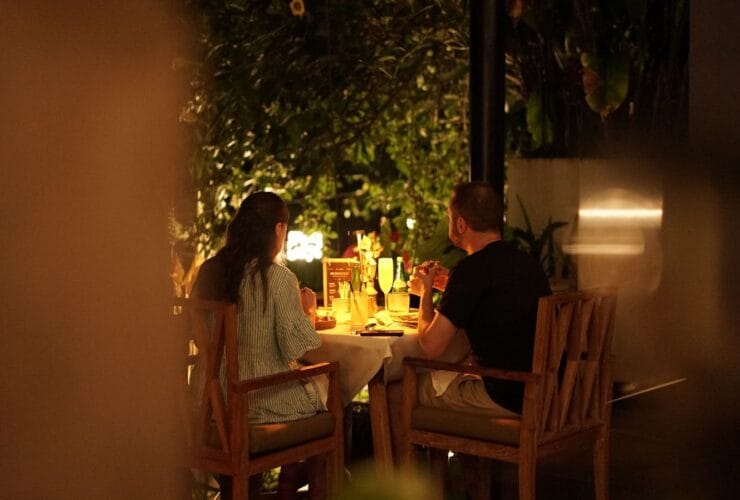Journal
Oleg Tamulilingan: Bali’s Romantic Dance of Grace, Devotion, and the Spirit of Love – Now Alive Every Thursday at Amora Ubud
In the realm of Balinese dance, every movement has a meaning. Every gesture, a sacred thread in a larger cultural tapestry. But among the many dances passed down through generations, Oleg Tamulilingan holds a special place. It doesn’t just perform tradition, it performs love.
The Origin of a Cultural Treasure
Oleg Tamulilingan, meaning “Dance of the Bumblebees,” was created in 1952 by I Ketut Mario, one of Bali’s most visionary choreographers. Commissioned during a cultural revival period and first performed for international audiences at the Taman Budaya Bali (Bali Arts Centre), the dance was a symbol of cultural pride, a fresh innovation rooted in ancient philosophy.
What made Oleg so revolutionary was its format. Traditional Balinese dances were often solitary or performed by large groups. But Oleg was a duet, a delicate, flirtatious conversation between a male and female dancer, embodying two bees swirling through a flower garden. They chase, court, and revolve around one another in a ballet of emotion, without ever physically touching.It was Bali’s way of expressing the poetry of romantic pursuit without crossing the lines of ritual or modesty. In Balinese philosophy, this kind of balance, between desire and restraint, is known as “rwa bhineda” (the harmony of opposites). Oleg Tamulilingan became a metaphor: a dance about love, but also about harmony, nature, and beauty in stillness.
Symbolism in Every Step
The dance opens with the female dancer entering gracefully, representing the blossoming flower in a garden. She is soon followed by the male, the bee, curious and enchanted. Their movements are subtle yet suggestive, head tilts, fluttering fingers, swirling hands. Their hips sway gently, mimicking bees circling in air, always near, never quite landing. It’s courtship in motion, performed with the kind of discipline only years of practice can refine.
Music played on the gamelan gong kebyar accompanies the performance, fast, syncopated, alive. It builds, then falls, matching the tension between the two dancers. At times it’s playful, at times almost melancholic. But always, it is full of yearning.
And this is why Oleg Tamulilingan is so beloved: because it reflects what we all know to be true about love, it’s beautiful, it’s patient, and it never arrives all at once.
Oleg Tamulilingan at Amora Ubud – Love, Made Visible
At Amora Ubud, where romance and serenity are the heartbeat of every experience, Oleg Tamulilingan is performed live every Thursday night as part of the Balinese Culture Dinner, a weekly evening dedicated to celebrating the island’s living traditions.
Set in the resort’s open-air cultural space, with the soft breeze of the Ubud valley brushing past, guests enjoy a curated dinner of authentic Balinese and archipelago cuisine while the dance unfolds. This is not a performance in a crowded tourist theater, it is intimate, immersive, and soulful.
Couples find themselves drawn into the story, as the dancers perform just meters away, their expressions radiant under torchlight. Guests often describe the moment as “cinematic,” yet deeply grounding.
It’s a reminder that at Amora, romance is not just found in your private villa or a sunset over the treetops. It’s woven into the cultural fabric. It’s found in the story of Lanang and Wadon, echoed in the legends of Balinese devotion. And yes, it’s alive in the flicker of fingers, the tilt of a crown, the quiet drama of Oleg Tamulilingan.
An Invitation to Witness Love the Balinese Way
There are many ways to celebrate love: with flowers, with dinners, with a whispered promise. But few are as timeless as a dance that has been passed down from heart to heart, stage to stage, valley to valley, for over seventy years.
So if you’re staying at Amora Ubud on a Thursday evening, don’t miss the chance to witness Oleg Tamulilingan. Let the music carry you. Let the story touch you. Let the grace of tradition remind you that love, when expressed with sincerity and reverence, never fades. It only dances.





